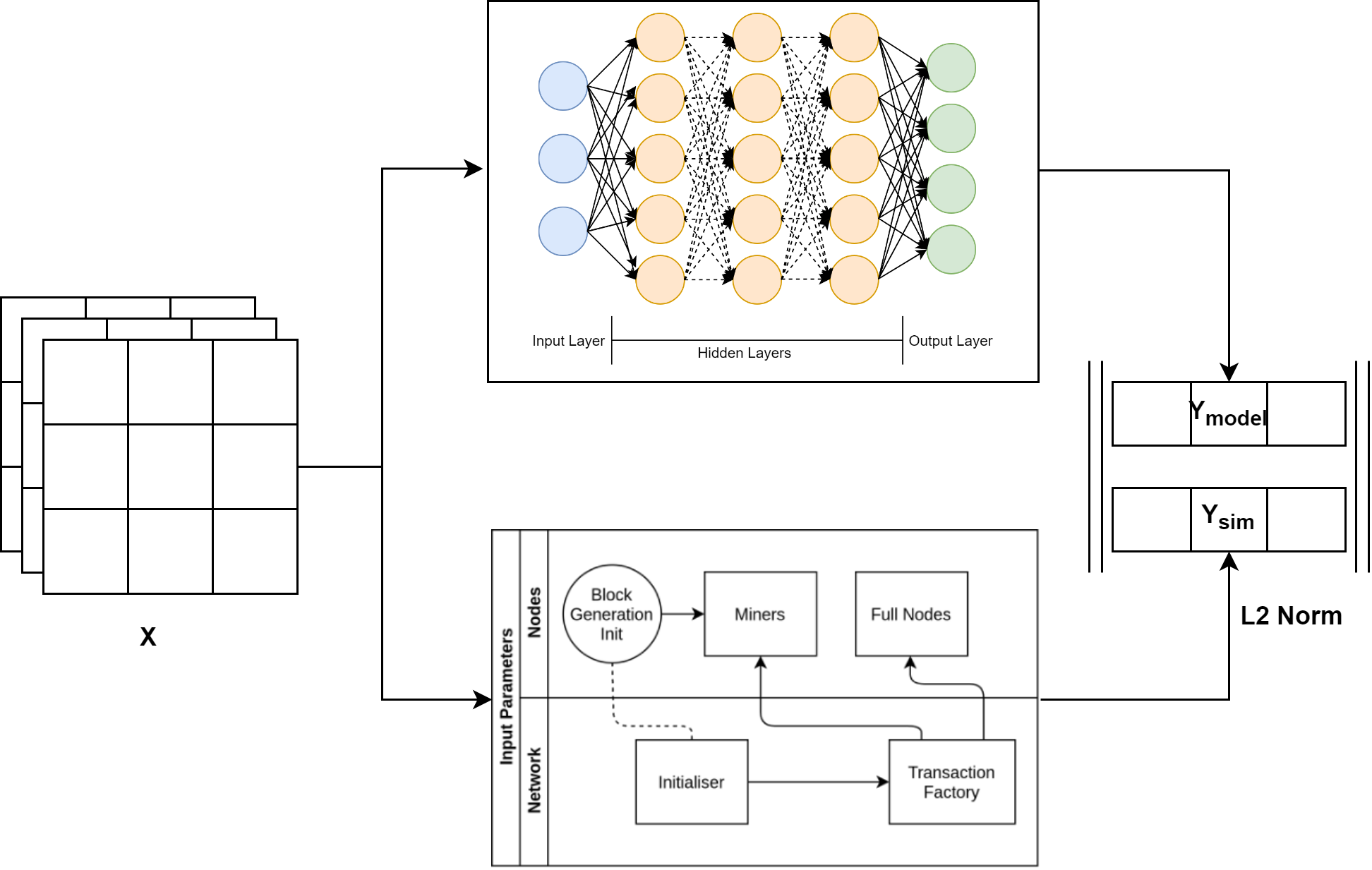BlockEval - A Summary
Acknowledgement : I am an author of the paper and the work stemmed from my Bachelor’s Thesis along with Shashwat Jolly and Dr. Kalpesh Kapoor. Please reach out to me for any clarifications or suggestions.
Terminologies and Pre-requisite knowledge
- Blockchain - Block, Node, Fork, Transaction, Mining, Consensus, Proof-of-Work
- Artificial Neural Networks
- XGBoost
Introduction
- BlockEval - mimics the behaviour of concurrent operations that occur in a real-life blockchain system.
- Correctness of simulator performed by comparision with independent model built from the real Bitcoin-transactions data.
- Simulates Proof-of-Work consensus model.
Architecture
- Built in Python, Simpy framework
- Simulates entities using Simpy processes.
- Process behavious defined by python generator functions.
- Processes interact using events.
- Propagation delay simulated using Simpy Stores.
Validation
- Bitcoin network data used to train several models such as XGBoost and Fully connected Neural Networks.
- Feature vectors used for training include : Mempool Size, Transactions per Second, Block Generation Frequency.
- Model and Simulator generate a set of predictions such as : Median Confirmation Time, Transactions per Block, Transaction Fee.
- Same input configuration provided to Model and Simulator and the L2 norm of their predictions is used to evaluate performance.
- XGBoost outperforms ANN.
- XGBoost configuration : 50 estimators along with L1 and L2 regularization terms of value 10, objective function : minimize the squared error.
- Relative error on test data : minimum 3.42% , maximum 7.65%

Observations
Empirical relations drawn between
- Simulation time vs Number of nodes
- Number of forks vs Degree of connectivity
- Median waiting time vs Degree of connectivity
- Simulation time vs Degree of connectivity
- Number of blocks vs Number of nodes
- Number of forks vs Number of nodes
Paper and Code
Enjoy Reading This Article?
Here are some more articles you might like to read next: